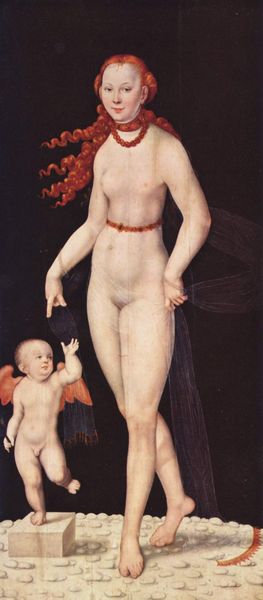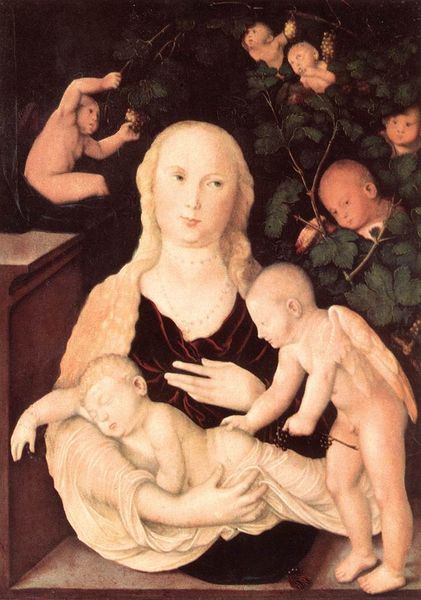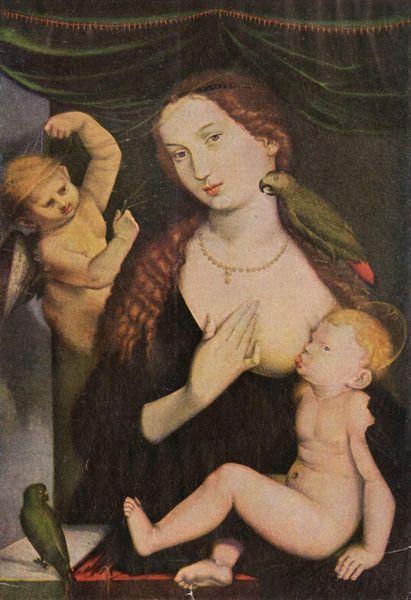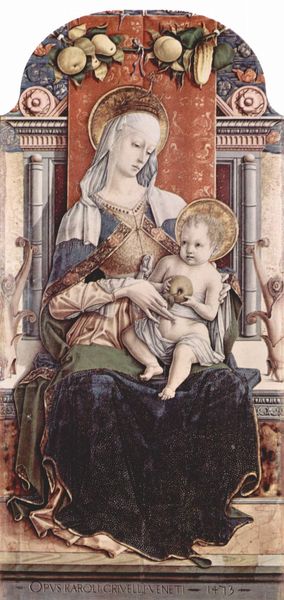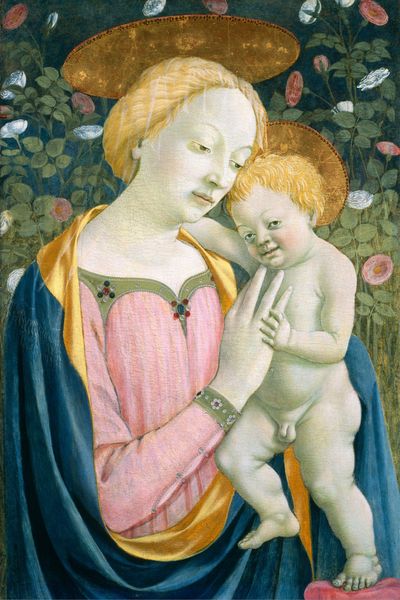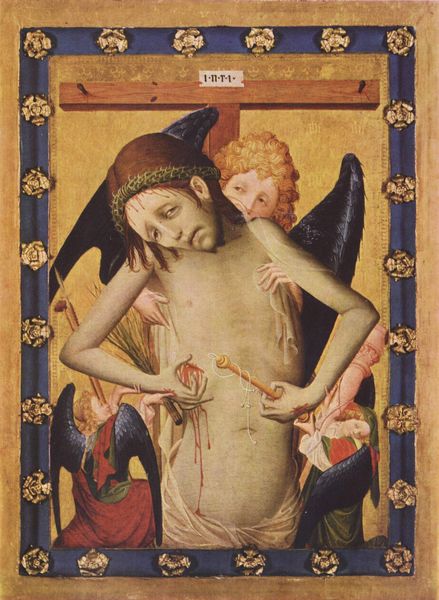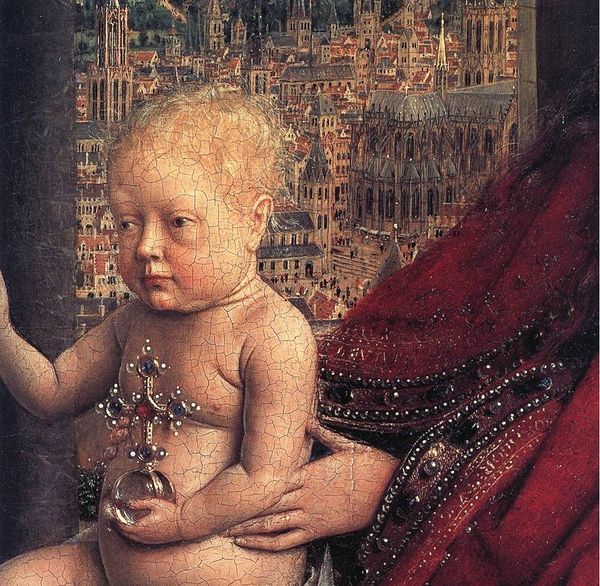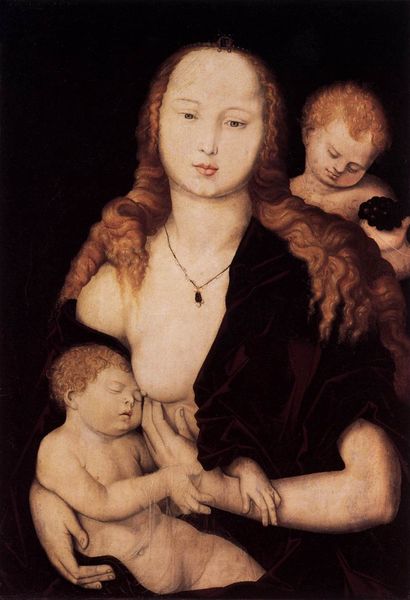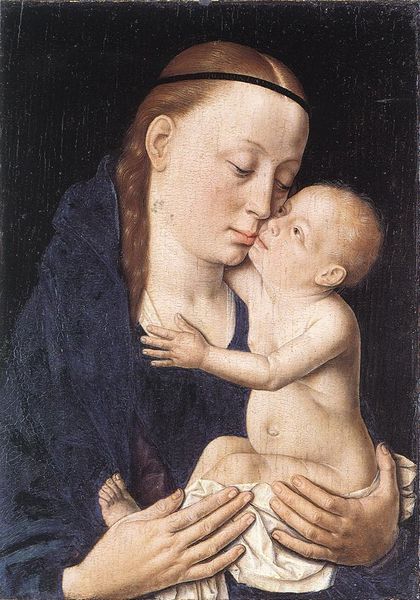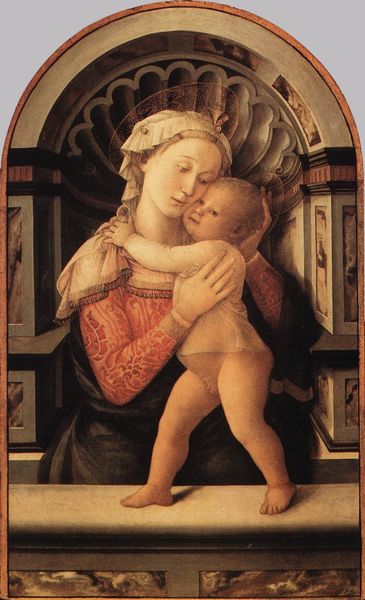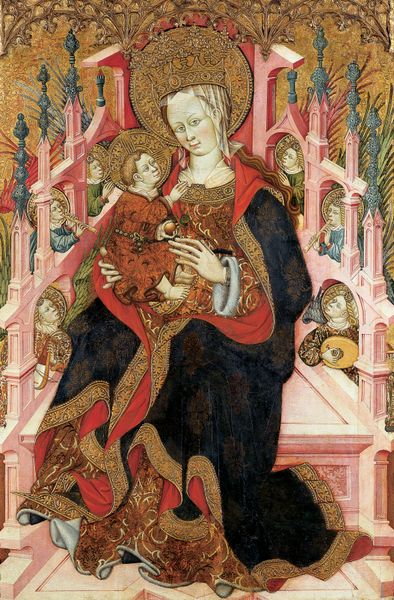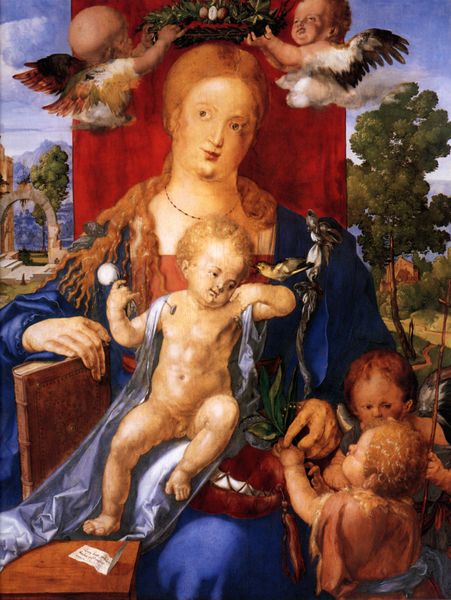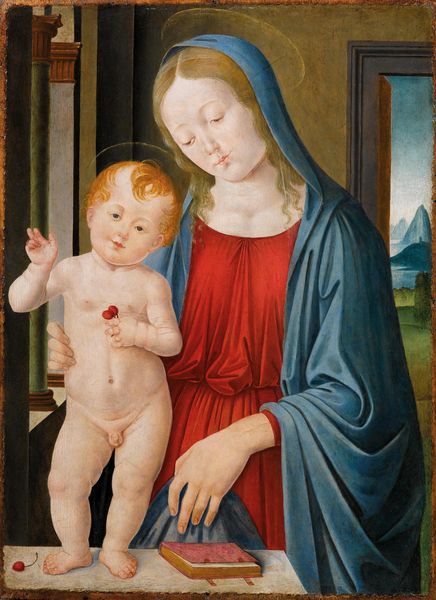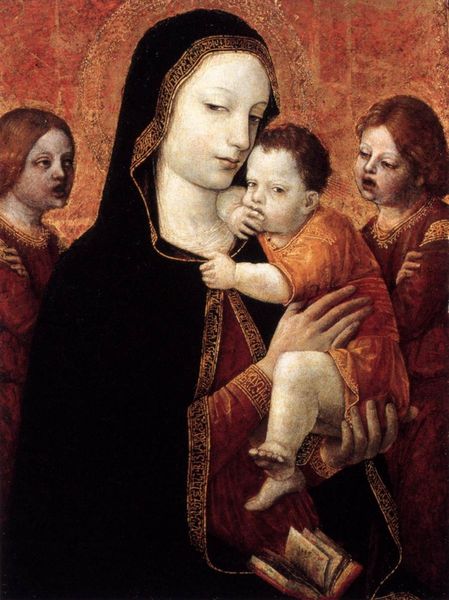
Madonna and Child. Left Panel of Diptych de Melun 1450
0:00
0:00
tempera, painting
#
portrait
#
allegory
#
tempera
#
painting
#
italian-renaissance
#
early-renaissance
#
portrait art
#
miniature
Dimensions: 93 x 85 cm
Copyright: Public domain
Editor: This is Jean Fouquet’s "Madonna and Child," a tempera on panel from around 1450. I’m struck by how cool and almost alien the Madonna appears, juxtaposed with the vibrant red and blue cherubs. What is your take on it? Curator: Let us begin by observing the clear, precise lines defining form, note how they construct the Madonna's idealized, almost porcelain-like skin. What effect does this precise detailing achieve? Editor: It feels very deliberate, artificial even, which distances her from being a relatable human figure. Curator: Precisely. And consider the geometrical arrangement of the figures – the Madonna at the apex, forming a triangular composition with the Child and flanked by the seraphim. How does this formal arrangement guide our reading of the work? Editor: The triangular composition gives her a position of authority but is very static, and the angels don't relate with her and the Child. Curator: Consider the chromatic relationships; the ultramarine backdrop pushes the stark white of the Madonna forward, creating an interesting interplay of depth. Editor: The color balance and how the background advances feel quite contemporary, even though it's so old. I learned from this exercise how an intentional arrangement of colors makes some elements more important. Curator: Yes, focusing on the interplay of line, color, and form reveals how the painting actively constructs its meaning. It refines one's visual literacy, doesn't it?
Comments
No comments
Be the first to comment and join the conversation on the ultimate creative platform.
